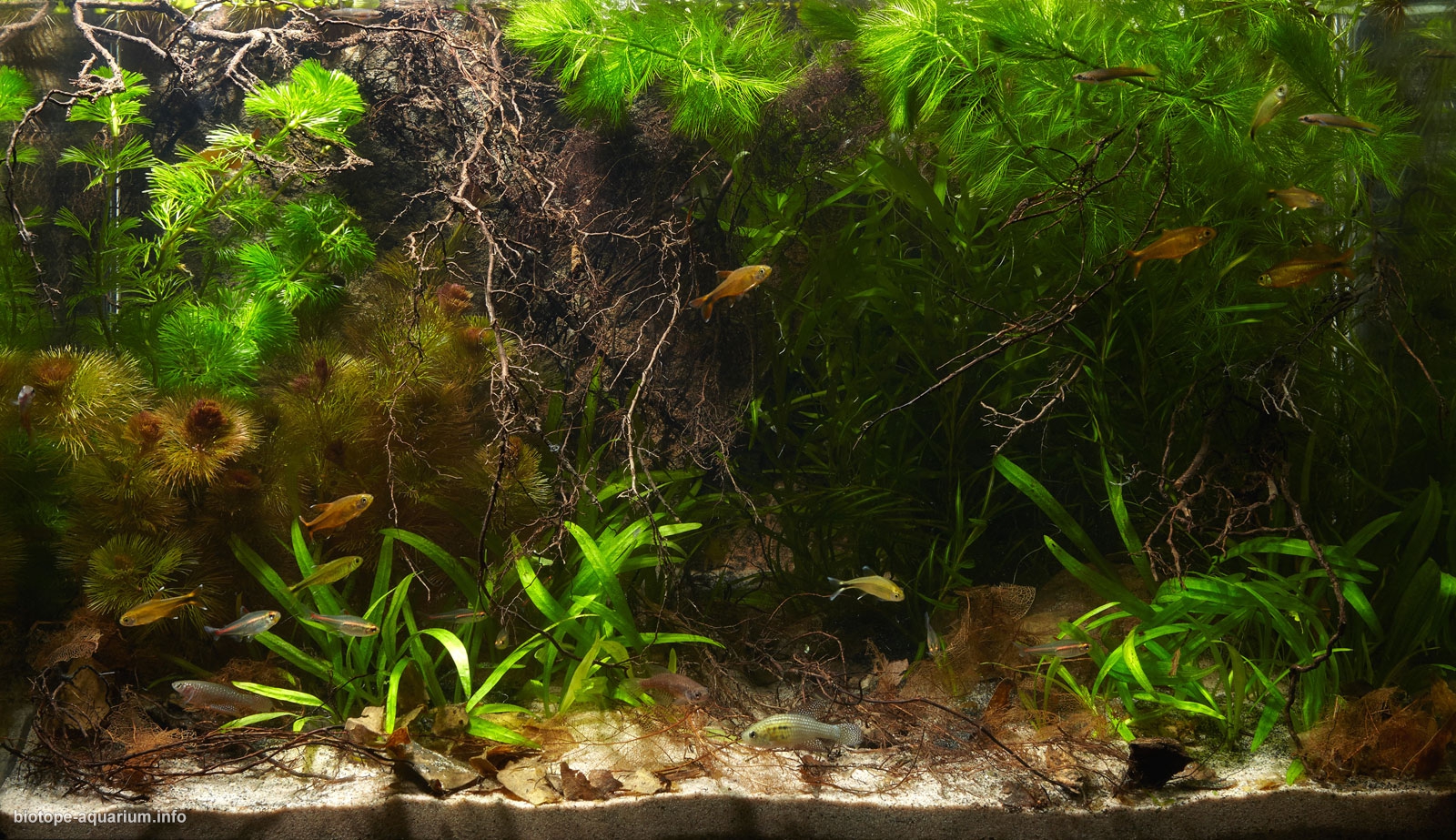Duct in the middle of the São Francisco River, Brazil
The 9th place in the qualifying stage of the Biotope Aquarium Design Contest 2015
![]() Russia. Svetlana Kirillova
Russia. Svetlana Kirillova

Volume: 60 L
List of fishes: Simpsonichthys auratus, Rivulus xiphidius, Hasemania nana, Hemmigrammus gracilis
List of plants: Miriophyllum brasiliense, Cabomba caroliniana, Cabomba furcata, Ehinodorus bolivianus, Heterantera zosterifolia, Potamogeton gayi, Salvinia molesta
Biotope description: São Francisco River starts in the mountain range of Serra da Canastra, flows through the Brazilian Highlands to the northeast in a wide valley parallel to the Atlantic coast, and then turns sharply to the southeast, forming a set of rapids and waterfalls, and empties into the Atlantic Ocean. The entire river basin is located in Brazil draining an area of over 630,000 square kilometres. In the middle reaches the São Francisco River flows through relatively arid regions, transforming during the rainy season when the water level rises to 6-7 meters. At this time many secluded creeks and canals form, where aquatic plants begin to flourish, especially in areas of strong sunlight. In the shadow of shrubs and trees growing along the banks, in their roots different types of fishes find places for spawning and hiding. At this time, within a small reservoir seasonal killifish may occur, such as the magnificently colored Simpsonichthys auratus, non-seasonal killifish Rivulus xiphidius, according to fishbase.org, living in the region and, of course, different types of Characidae living here.

In my opinion, this is the strongest entry in this category. Everything looks realistic. As a recommendation, it is better to use soil.

This biotope looks like a gorgeous painting. The habitat is very specific, and all elements reinforce the theme of lush plant growth among the overhanging tree roots along the river bank. It is a very dense and lively scene with a nice juxtaposition of various biotope correct plants, growing right to the surface as they would in nature. The fish seem at home sheltering among the plants. Lacy decayed leaves, feathery plants, and fine branchy roots all lend it a theme of fragility, and highlight the cycle of life and death, growth and decay.
